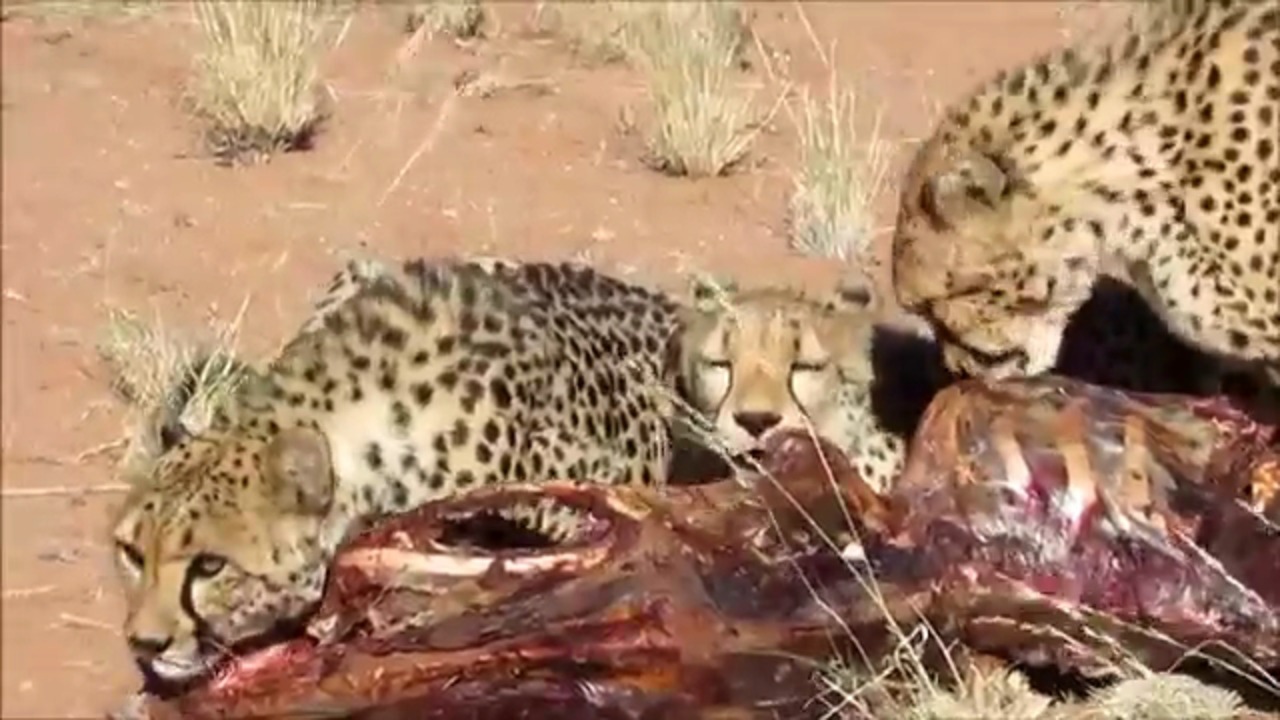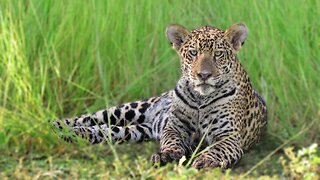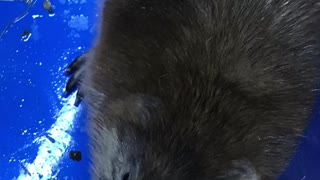Premium Only Content

Rescued cheetahs gorge themselves
A wild ostrich was found dead on a fence, and fed to the four rescued cheetahs. The cats had a feast, to the point where they could barely move and wouldn't even stop panting, but even then they would try and eat some more, when we got there to remove the carcass. A couple of them just gave up! Look at those faces!
The Cheetah (Acinonyx jubatus), is native to Africa and Asia, although it has been extirpated from nearly all of its Asian range. They could once be found from the shores of the Mediterranean and the Arabian Peninsula, west through central India, Pakistan, Afghanistan, Turkmenistan, Uzbekistan, and north to the northern shores of the Aral and Caspian Seas, but nowadays are limited to the central deserts of Iran. Although cheetahs still occur in several African countries, they now only occupy 10% of their historic range.
Five subspecies are recognized: Acinonyx jubatus hecki, in Northwest Africa; Acinonyx jubatus earsoni, in East Africa; Acinonyx jubatus jubatus, in Southern Africa; Acinonyx jubatus soemmerringi, in Northeast Africa; and Acinonyx jubatus venaticus, from Northern Africa to central India.
Cheetahs are classified as Vulnerable, although the subspecies Acinonyx jubatus venaticus and Acinonyx jubatus heckii are listed as Critically Endangered.
They can be found in dry forest, thick scrub, grassland and hyperarid deserts. They are only absent from montane and tropical forests.
Cheetahs are mostly known as the fastest land mammals, however, they are only able to sustain top speeds for a few hundred meters. If they don't succeed at their hunt by then, they need to give up and rest, otherwise they overheat.
Unlike other cat species, female cheetahs are solitary, accompanied only by their young, and males can be solitary or live in coalitions of two or three, usually consisting of brothers, but not necessarily.
-
 0:40
0:40
NataliaCara
1 year agoEncountering a beautiful jaguar cub in the wild!
1.39K2 -
 1:52
1:52
ViralHog
3 years ago $0.01 earnedZipliner Stranded Over Gorge is Rescued
164 -
 4:26
4:26
patrickma
3 years agoRescued Dog
911 -
 0:31
0:31
Sawraihchra
3 years ago $0.01 earnedRescued a Muskrat
36 -
 7:33
7:33
Caperxxc
3 years ago $0.09 earnedRescued the monster renegade
1161 -
 3:19:17
3:19:17
LumpyPotatoX2
7 hours agoSCUM: Lumpy Land RP Server - Day #1 - #RumbleGaming
39K2 -
 1:42:59
1:42:59
Game On!
19 hours ago $8.44 earnedTop 10 Super Bowl Bets You Can't Afford To Miss!
76K9 -
 2:17:02
2:17:02
Tundra Tactical
1 day ago $22.52 earnedTundra Nation Live : Shawn Of S2 Armament Joins The Boys
163K28 -
 11:00:11
11:00:11
tacetmort3m
1 day ago🔴 LIVE - SOLO RANK GRINDING CONTINUES - MARVEL RIVALS
210K5 -
![Shadows Of Chroma Tower, Alpha Playtest [Part 1]](https://1a-1791.com/video/fwe2/1d/s8/1/5/Q/U/n/5QUnx.0kob-small-Shadows-Of-Chroma-Tower-Alp.jpg) 13:29:21
13:29:21
iViperKing
1 day agoShadows Of Chroma Tower, Alpha Playtest [Part 1]
172K9